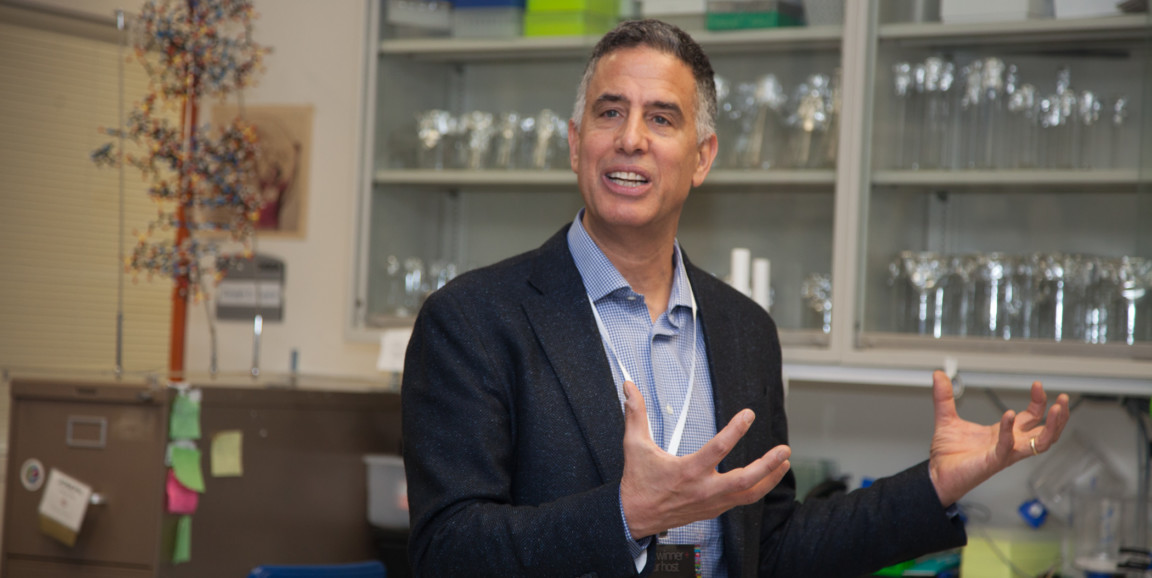Developmental biologist Lucy Shapiro, PhD, opened the second annual Discovery Innovation Awards event held on campus recently by sharing her personal research story.
"I’m telling you this saga because it’s an example of just one person at Stanford doing curiosity-driven research which can open up the world and affect the world," Shapiro said. Although her proposed research was met with skepticism, Shapiro explained that she persevered and her investigations revealed how the bacterium Caulobacter crescentus works, creating a model organism that provides insight into the bacterial cell cycle and more.
Funding that type of "high-risk, high-reward" research is the goal of the Discovery Innovation Awards, Shapiro emphasized. And these basic investigations play a critical role at Stanford Medicine, Dean Lloyd Minor, MD, said.
"What I hope is that 20 years from now, when people are describing the impact that Stanford innovation has had on the world… they’ll mention a whole new generation of discoveries that have resulted in large part because of the investments we’ve made in our faculty to enable them to do their most innovative work," Minor said.
This year, 18 Stanford researchers received the competitive awards, which were introduced six years ago, but celebrated at an event for the last two years. Since 2013, $7 million in grants have been distributed, leading to 157 research papers and more than $57 million in follow-on funding, according to Stanford Medical Center Development records.
This year, guests participated in lab tours hosted by the award winners themselves, which included interactive stations led by their postdoctoral and graduate student lab members.
Award winner Jody Puglisi, PhD, explained that he is working to understand the behavior of RNA by developing movies, rather than snapshots, that capture changes over time. To illustrate, he urged his guests to contemplate the Edgar Degas painting of a ballerina. While the painter beautifully "captures ideas of the motion… we don’t know where the ballerina is going to go next, we don’t know what the choreography is," Puglisi said.
But by gaining a better understanding of the movement of RNA, Puglisi and his team hope to gain insight into how to disrupt diseases like muscular dystrophy and cystic fibrosis.
Next, sensory biologist Miriam Goodman, PhD, guided guests through luminescent displays of live nematodes in her Wormsense Laboratory, which studies the C. elegans worm to understand, in part, ion channels that are activated by touch.
By studying the basic mechanisms governing the sensations of touch and proprioception, or the sense of body placement, Goodman and her team are hoping to help prevent the sensory diminishment that leads to falls in the elderly and lower-limb amputations in diabetics.
Using the funding from her award, Goodman said she intends to investigate whether inhibiting a specific protein can prevent chemotherapeutic drugs from interfering with touch sensory neurons, a problematic side effect of cancer treatment.
On other tours, awardee Aaron Straight, PhD, a biochemist, demonstrated how light microscopy illuminates the function of complex genomes in living systems and explored cell division of frog embyros in vivo.
Dan Jarosz, PhD, helped visitors learn how large-scale genetic mapping contributes to treating human diseases like cancer and infectious diseases.
Geneticist Julie Baker, PhD, explained how her lab uses genomic technologies to help improve knowledge of the diseases of pregnancy. And Andrew Huberman, PhD, invited attendees to experience a "virtual reality stress room" to articulate the brain’s response to the stimuli of fear and anxiety.
As the evening drew to a close, Puglisi's remarks reflected on the importance of basic science that pushes boundaries. "We’re not going to develop the cure per se [but] we’re people who provide firm foundation, like in architecture — you don’t build scientific edifices on flimsy ground."
Photo by Stanford Medical Center Development




